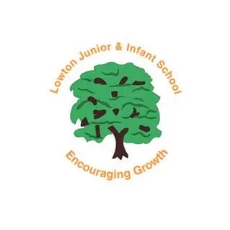The tradition of Christmas in fiction is one that has permeated throughout the ages, and many famous stories and poems have been written with a festive theme as a core component. Here our our favourite examples, and ideas for lessons based around some of the most cherished Christmas literature
This classic ghost story of a withered, mean old man realising that he should embrace the joy in life and be a good person, else face the scorn and misery for the rest of his life, is one of the most adapted stories of all time. The structure of being visited by the three ghosts of past, present and future is a wonderful literary device that essentially gives us the life story of a character without breaking the flow of the narrative or becoming long winded. While the prose is a little advanced for some younger children, KS2 upwards should be able to read the story, and then discuss it. Here are a few ideas for lessons for A Christmas Carol:
I ain’t afraid of no ghosts – What is Scrooge really frightened of?
Although this is a ghost story, not all of the ghosts are scary. Do the ghosts represent something other than supernatural beings? Ask students to investigate what is really scaring Scrooge, and ask why ghosts are used to make this point. If they were to be visited by the ghosts of past, present and future what would they be scared to see? Get students to write a short story about their own visits from the three ghosts, and what lesson they would learn.
Bah Humbug – How A Christmas Carol has become so important
A Christmas Carol is one of the most referenced books in popular culture, with turns of phrase such as “Scrooge”, “Bah Humbug” and “God bless us, everyone” becoming part of everyday conversation. Get students to investigate how many times A Christmas Carol has been adapted or parodied by setting them a research task of finding 10 different versions of A Christmas Carol. Then ask them to discuss why they think the story is so popular, and how the phrases in the book became part of the language. Can they think of any other examples of great stories that people tell over and over again, or any phrases that originally came from books?
A Visit from St. Nicholas (The Night Before Christmas) – Clement Clarke Moore
This classic poem is not only a great read, but arguably the origin of what we now consider the modern Santa! The first reference of Santa being all dressed in red, accompanied by Reindeer and his chimney exploration habit all come from this poem. Here are a few ideas for activities:
Twas the night before… – Parody and Understanding Form (KS2)
A Visit From St. Nicholas has been rewritten and parodied over 1000 times. You can find the full list of recorded parodies here. It’s a very fun poem to imitate, so let your students have a go! More importantly, ask them to carefully examine how the poem sounds and where the rhymes are. Demonstrate to them the AABB rhyme scheme, and (if a high enough level) discuss stressed and unstressed syllables. This poem actually has the same rhythm and syllable stress as a limerick, but not the same rhyme scheme. Get everyone to write their own night before christmas verse, and then ask them to examine how accurate it is in using the form of the original.
The Tailor of Gloucester – Beatrix Potter
Beatrix Potter’s personal favourite of her stories, The Tailor of Gloucester tells the tale of a humble tailor who has been hired to finish the waistcoat of the the town mayor for his wedding on Christmas Morning, only for his cat to hide his last piece of twist from him out of spite of the tailor releasing the mice he caught. The mice display their gratitude by fixing the waistcoat in the night, and save the tailor from humiliation. It’s a sweet, short story that shows how a little mercy can save you in the long run.
Public Squeaking – Anthropomorphism (KS1)
The Tailor of Gloucester is a story that has lots of characters that are different animals, and they’re all portrayed in different ways. Ask students to look at how the animals act in various “human-like” ways, including how the mice dress up in their specially made clothes. Do we find the characters more or less sympathetic and lovable once they wear human clothes? Why do we care about the cat eating the mice, and why do we think Simpkins actions are bad? As students to consider in what ways the animals are like people, and then get them to write a short story from the perspective of an animal of their choosing.
Resources like these can be stored inside our School Jotter Resources app, where you can share your own creations with other teachers and work with the community to create lessons plans. You can learn more at SchoolJotter.com









